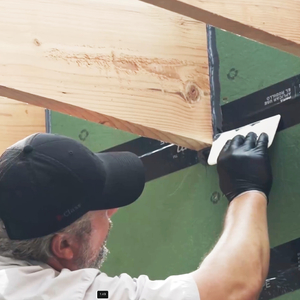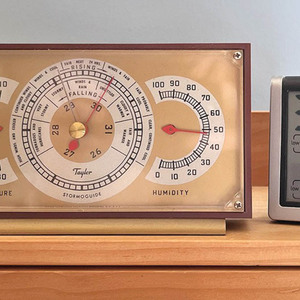Hello All,
I recently replaced my 50 gallon gas hot water tank in my 1.000 square foot house, seemed like a straight forward project. Since I replaced the water heater I can’t seem to easily get hot water. To get warm water out of the laundry sink, which sits just to the left of the water heater in the garage, you have to leave the the hot water running full blast for about 15 minutes. It never gets hot enough to steam, just warm and if you turn down the volume of water coming out of the faucet the hot water turns ice cold. To make things even worse I can’t get any hot water to come out in the bathroom that is about 25 feet to the right of the water heater.
When you touch the copper pipe coming out of the tank is very hot to the touch, when you get in the crawl space and feel the pipes the one headed to the laundry sink is hot, however the one headed for the bathroom is ice cold. I’ve traced all the hot copper pipes and they don’t cross connect to the cold water anywhere. Water also flows uninhibited through the hot water pipes, it is just cold.
Has this ever happened to anyone else? Any suggestions?


















Replies
you left a shutoff or bypass valve open/closed???
Did somethingsimilar once upon a time and got hot water to the toilet, lukewarm elsewhere, and the hot water cracked the toilet tank.
Recheck your valves?
You got two lines cross wired?
Welcome to the
Taunton University of Knowledge FHB Campus at Breaktime.
where ...
Excellence is its own reward!
You didnt hook the supply pipe (cold) to the hot side of the water heater, did you?
My guess is that the old tank was crosswired and you failed to swap the dip tube in the new one to match.
Look at the top of the tank. There should be "HOT" and "COLD" embossed next to the two connections. Make sure the one embossed "HOT" is the one your hot water pipe is connected to. I think on most units this is on the left side.
Also, of course, don't confuse the water connections with the temperature/pressure valve connection. That should be embossed something like "RELIEF VALVE" and should ONLY have a T&P relief valve in it.
<seemed like a straight forward project.>
My guess is that it wasn't a easy as it seemed.
Like it was suggested in prior posts, you've just crossed some pipes somewhere,.
turn the thermostat on
That's when you scream DOH!!!!!! when no one can hear you
“When politicians and journalists declare that the science of global warming is settled, they show a regrettable ignorance about how science works.” Nigel Calder, editor of New Scientist
Thanks everyone for all of your suggestions!
Last night I double checked my tank connections; cold supply comes in the top on the right, the hot leaves the tank on the left, and the relief valve is on the upper right side of the tank. Everything appears to be hooked up right. I got under the house and followed the line coming off the hot side of the tank, it comes from the tank to a "t" with a branch going to the kitchen and laundry and the other end of the branch going to the bathroom. The hot branch doesn't connect to the cold side anywhere under the house. Is there a possibility something is crossed in the walls? Has anyone encountered this before? Laying under the house I can see up the holes in the house framing so the cross connections would have to be near the stub out to the fixtures.
The other thing I didn't even thing to look at is where the cold water supply is coming from to feed the new tank. Maybe my problem is there? Looks like I'll have to get back under the house and trace the cold side of the system.
Does anyone know anything about how the guts of these tanks work? Could I have a bad tank with something cracked on the inside? When you run the water the tank fires up just fine, it also fires up if you turn the temperature dial.
Thanks again for everyones help!
One other possibility. Sometimes a single-handle shower valve fails in such a way that, when the shower is shut off, the hot and cold are connected to each other through the valve. This can cause cold water to be drawn into the "hot" pipe backwards through the valve.If you have accessible shutoff valves for the various single-handle valves in the system, shut off all of them except for the one you're testing. (Only need to shut off one valve -- hot or cold -- for each single-handle valve.) Then test to see if you can get hot water. If so, turn the shutoff valves back on one at a time until you find the culprit.
So convenient a thing it is to be a reasonable Creature, since it enables one to find or make a Reason for everything one has a mind to do. --Benjamin Franklin
One place you can find an illustration of the guts inside a water heater is http://home.howstuffworks.com/water-heater.htm There's really not much to see, but if you look at the illustration you can see that when you open a hot water faucet, the hot water goes out the top of the tank and the cold water that replaces it goes through the dip tube down to the bottom. So if everything is working right, you've always got hot water at the top of the tank. MSA1 and DanH suggested that perhaps you had the connections reversed or the dip tube misplaced, which would have the cold water coming in at the top of the tank and the hot water being taken from the bottom. That could certainly cause a problem. But even if you've confirmed that the connections are correct, there's still another possiblility: if the dip tube is broken at the top, or simply was never installed, when you open a hot water faucet the cold water will effectively bypass the tank and go straight from the inlet to the outlet. You'll get some mixing from turbulence and pick up some hot water that way, but you'll never get to the design temperature. You say the pipe coming out of the tank is really hot to touch. Open the faucet at the laundry tub and see if the pipe stays hot. If it turns cold, I'd check the dip tube. If the pipe stays hot, at least you can eliminate that as the problem and look elsewhere. But if the only thing that's different is the water heater, it seems like the problem has to be there.Dan
OK without seeing it in person let's start with the basics.
You should have two pipes coming from the wall to the water heater.
One should have a vlave & the other does not ( most aplications)
The valve will be on the cold to supply the water heater the other is the feed from the water heater to the system.
Are those connections made up correctly? The valved pipe should be connected to the nipple with the "cold" label.“When politicians and journalists declare that the science of global warming is settled, they show a regrettable ignorance about how science works.” Nigel Calder, editor of New Scientist
About a year ago, I replaced the 50 gallon electric water heater in my house and had a similar problem. It even got to the point where I was convinced that the dip tube in the new tank was broken from the factory, or installed on the wrong side of the tank. After several days of cold showers, searching for crossed lines and talking to the water heater manufacturer (they said they'd send out a plumber, but that I'd be paying a hefty bill if nothing was wrong with the tank), I retraced my installation steps and realized that, after installing the tank, I turned on every faucet in the house...except one; the one in the bathtub that we never use in our master bath. When I turned that faucet on, I found that, as expected, there was a lot of air in the line. I "drained" the air out of the line, and the water heater has worked perfectly ever since.
Did you sweat copper pipe fittings on the top connections? May have gotten the fitting to hot and melted the plastic dip tube.
I still thing only one circuit breaker turned on
Pssst it's gas.“When politicians and journalists declare that the science of global warming is settled, they show a regrettable ignorance about how science works.” Nigel Calder, editor of New Scientist
These are some great suggestions!
So I have two 3/4" copper pipes coming out of the wall for the tank, the cold supply pipe (on the right) has a valve and the other doesn't. Tracing lines under the house I've verified that the line with the valve is the cold. The ends of these pipes are connected to the tank via "flexible" copper threaded pipe (were existing), I didn't have to use the torch at all for this tank change. Thanks for the link for the "guts" of a tank, very helpful to get a handle on how these things operate.
The most interesting thing so far though is jdom's comment... I didn't mention it earlier because I didn't it had anything to do with this issue. I have my powder room toilet and pedestal sink yanked out right now because I'm re-doing the flooring. Is this true that the solution to my problem may be a simple as bleeding air out of the hot line for the pedestal sink? I'll give it a try this weekend... I'll tell you what though, I'm going to feel like a retard if that's all it was!
If you are like most of us, not matter what it turns out to be you'll feel like a retard!If it's something you did, then you feel stoopid.If it's the fault of the water heater, you'll feel stoopid for overlooking it.Your mission, should you decide to accept it, is to fix it and never tell anyone this story.This message will self destruct in 5 seconds....5, 4, 3, 2....
Make sure you get the air out of both the hot and cold lines. Hope it works!
I definitely have hot water now! I bleed the air out of my pipes and it didn't seem to change my situation so I started looking at my single handle faucets per DanH's suggestion. Turns out I had some old worn/torn 0-rings on the shower valve "guts"! Without these o-rings working I guess the cold and hot water were cross connecting. Thanks everyone for your diagnostic help!
Alls well that ends well! I know how frustrating that situation can be. Glad you got it fixed!